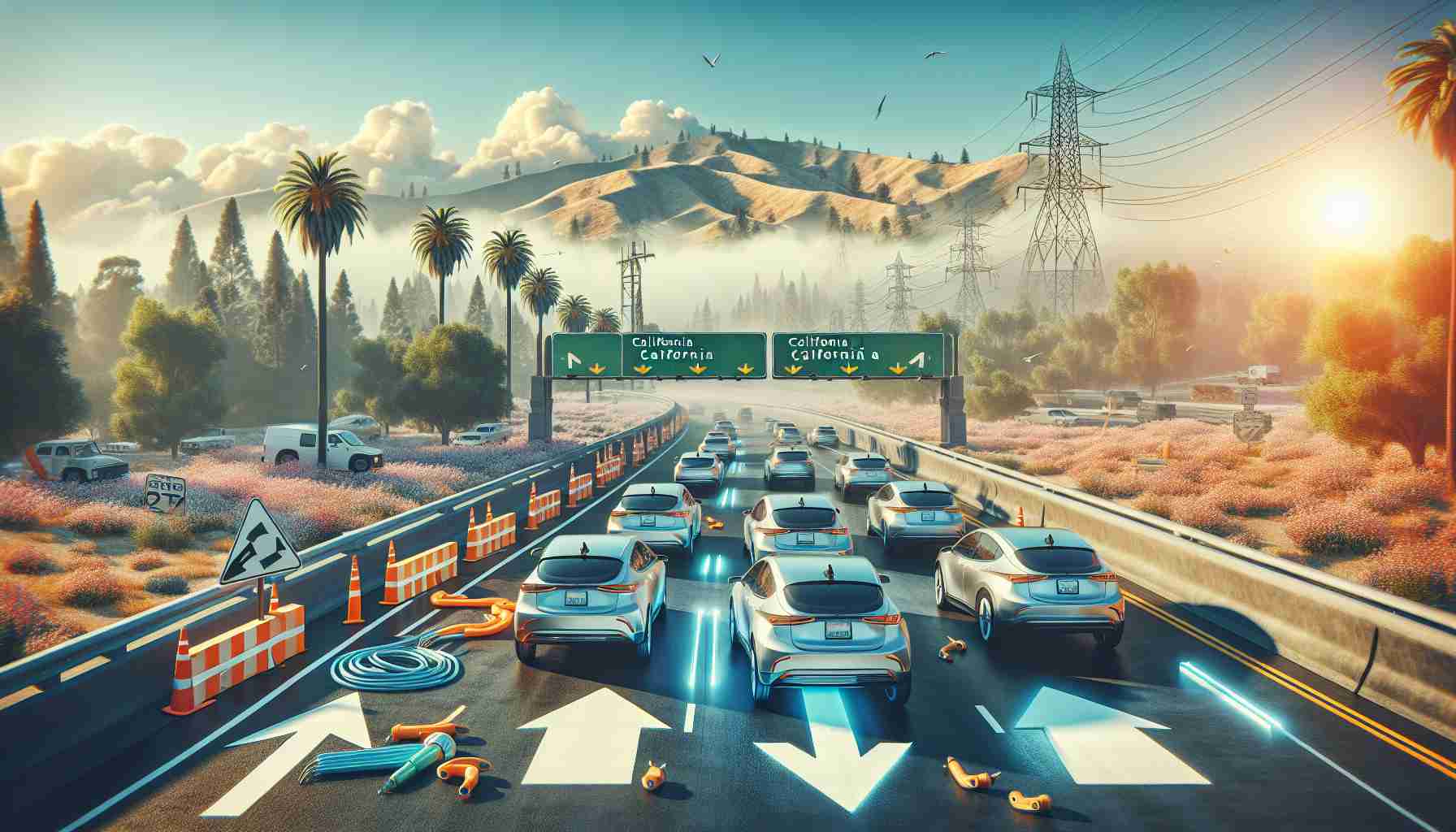- California aims for significant EV adoption but faces stagnating sales.
- EV sales rose from 7.7% in 2020 to 25.3% in 2024, but growth has slowed.
- Upcoming mandates require 35% of 2026 car models to be zero emissions and a full gasoline vehicle ban by 2035.
- Dealerships report reduced demand after initial popularity of certain EV models.
- The California Air Resources Board notes a plateau in overall vehicle sales.
- Failure to meet targets may result in penalties or changes to mandates.
- Experts caution that dwindling demand could push buyers to seek gasoline vehicles elsewhere.
- Consumer enthusiasm is essential for achieving California’s electrification goals.
In a bold move towards sustainability, California aimed to electrify its roads, yet a troubling trend has emerged: electric vehicle (EV) sales have stagnated. Despite a significant leap from just 7.7% in 2020 to 25.3% of all new cars registered in 2024, this figure only nudged up slightly from 25% in 2023, raising alarms about the state’s ambitious environmental goals.
As California gears up for sweeping mandates—35% of 2026 car models must be zero emissions and a complete ban on gasoline vehicles by 2035—the momentum seems to be faltering. Local dealership owners are seeing a dip in demand after an initial surge for popular models like the GMC Hummer EV. Customers who sought EVs may already be satisfied, leaving dealers craving fresh demand.
The California Air Resources Board acknowledges the slowdown, citing a plateau in overall vehicle sales. However, the stakes are high; failing to meet the state’s targets could have serious repercussions for lawmakers. As officials discuss flexible mandates and potential penalties, the question remains—will consumers truly embrace the shift to electric?
Experts warn that if demand doesn’t pick up, manufacturers might limit gasoline vehicle inventory, inadvertently raising prices and pushing buyers to neighboring states for alternatives. The future of California’s electric dream hangs delicately in the balance, leading to one crucial takeaway: the success of California’s ambitious car electrification goals hinges not just on regulations but on consumer enthusiasm and demand.
Electric Dreams or Distant Reality? The Future of California’s EV Market
The State of California’s Electric Vehicle Market
Despite California’s proactive stance towards sustainability and electrification, the sales of electric vehicles (EVs) are currently stagnating, posing a significant challenge to the state’s ambitious environmental goals. The state has set stringent targets, mandating that 35% of car models sold by 2026 be zero emissions, aiming for a complete ban on gasoline vehicles by 2035. However, recent data shows that the percentage of EV registrations edged only slightly from 25% in 2023 to 25.3% in 2024, indicating a potential plateau in consumer demand.
# Market Forecasts and Trends
– Sales Plateau: The stagnation in EV sales signifies a troubling trend, where previous surges in interest have not sustained momentum.
– Consumer Sentiment: Many consumers who were early adopters may now feel satisfied with their purchases, leading to decreased demand for new models.
– Price Fluctuations: Should manufacturers respond to low demand by reducing gasoline vehicle inventory, this could inadvertently elevate prices, forcing buyers to look out-of-state for alternatives.
# Pros and Cons of California’s Electrification Efforts
– Pros:
– Aggressive targets for sustainability.
– Decreased reliance on fossil fuels in the long term.
– Greater innovation in EV technology and infrastructure.
– Cons:
– Potential rise in car prices due to diminishing inventory.
– Growing frustration among consumers regarding available models and variety.
– Economic impacts on local dealers facing reduced demand.
# Limitations and Challenges
One of the significant challenges is the inadequate charging infrastructure currently in place. Many consumers are hesitant to invest in EVs due to range anxiety and the perceived inconvenience of charging. Addressing these limitations is crucial for fostering a more significant shift in consumer acceptance and enthusiasm towards electric vehicles.
Key Questions
1. Why are EV sales stagnating in California despite increasing market share?
The stagnation is attributed to several factors, including a lack of new, compelling models, consumer satisfaction with existing purchases, and economic pressures such as rising interest rates, which could make financing a new EV less appealing.
2. What are the potential repercussions if California fails to meet its emissions targets?
If the state does not achieve its goals, it could face penalties and regulatory backlash, which might lead to increased scrutiny on local governments and manufacturers. The environmental impacts would also be significant, as the state strives to combat climate change effects.
3. How can California revitalize interest in electric vehicles?
To renew enthusiasm, California could implement incentives for consumers, such as tax rebates or subsidies for first-time EV buyers, invest further in charging infrastructure, and promote educational campaigns highlighting the long-term savings and benefits of transitioning to electric vehicles.
Insights and Future Predictions
As manufacturers and dealerships adjust their strategies in response to current market conditions, the focus will likely shift towards enhancing electric vehicle offerings and reconsidering consumer financing options. The push for sustainable transportation is not solely dependent on strict regulations but must align with genuine consumer interest and market viability.
For more information on California’s EV initiatives, check out California DMV.














